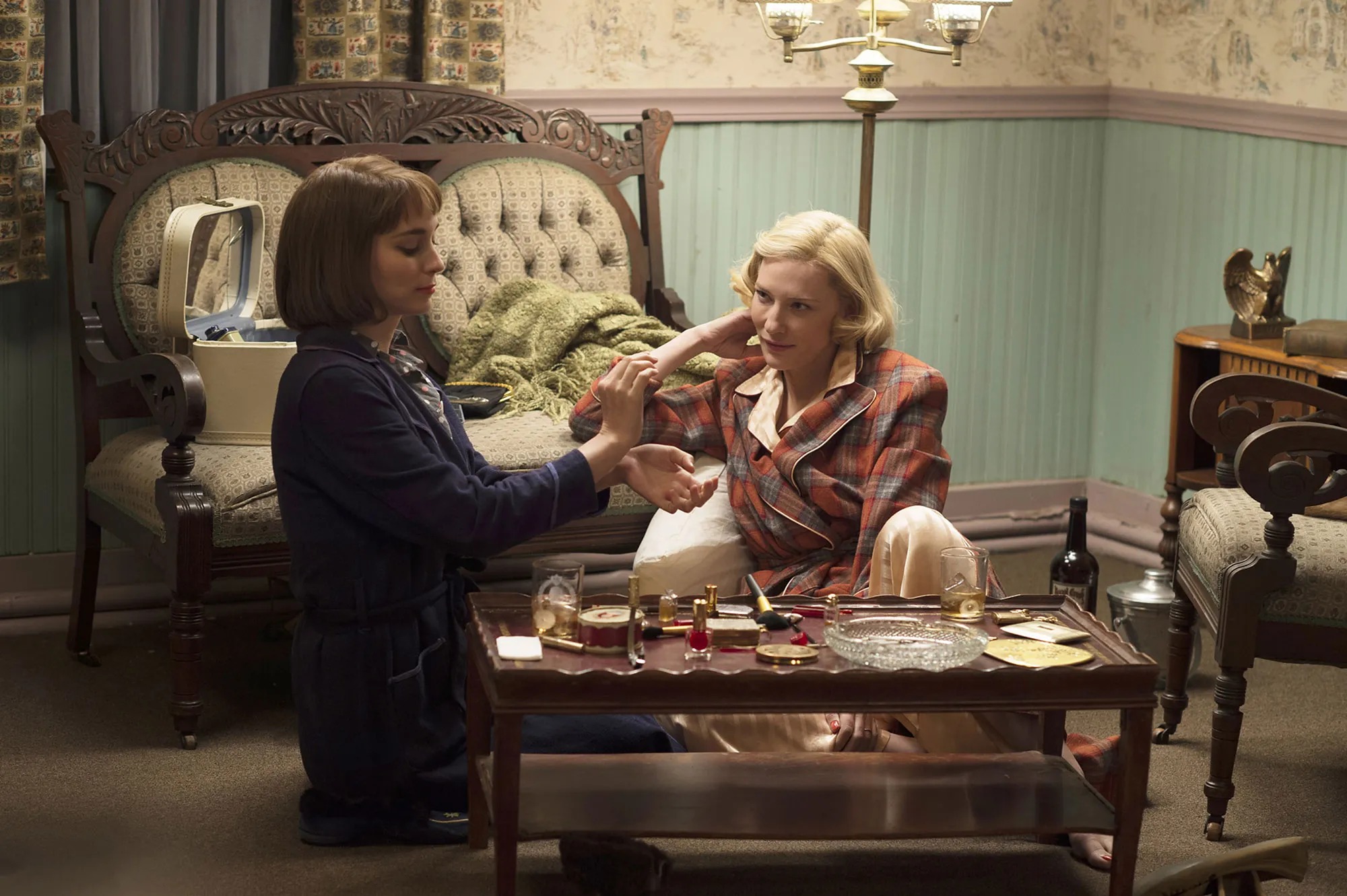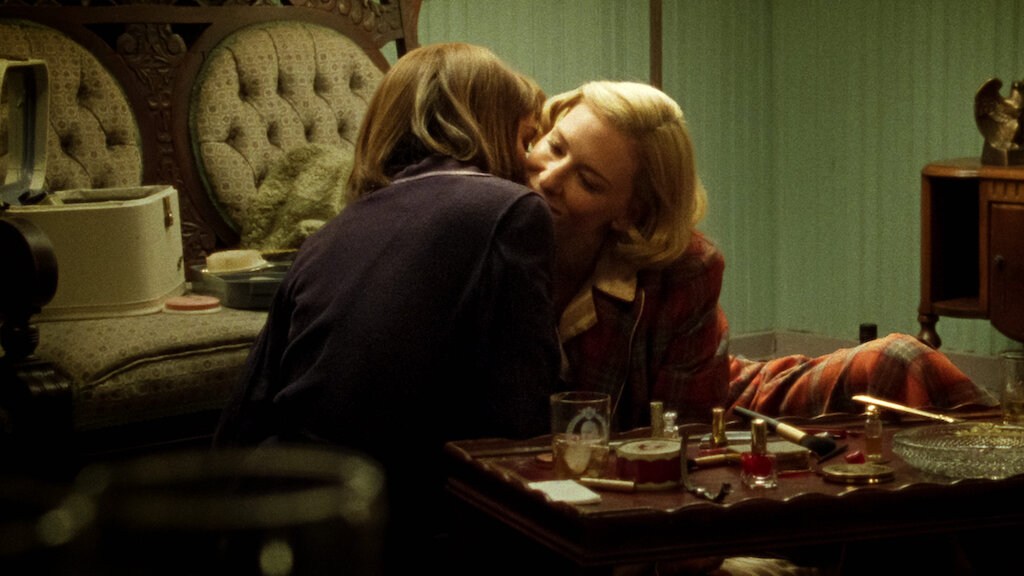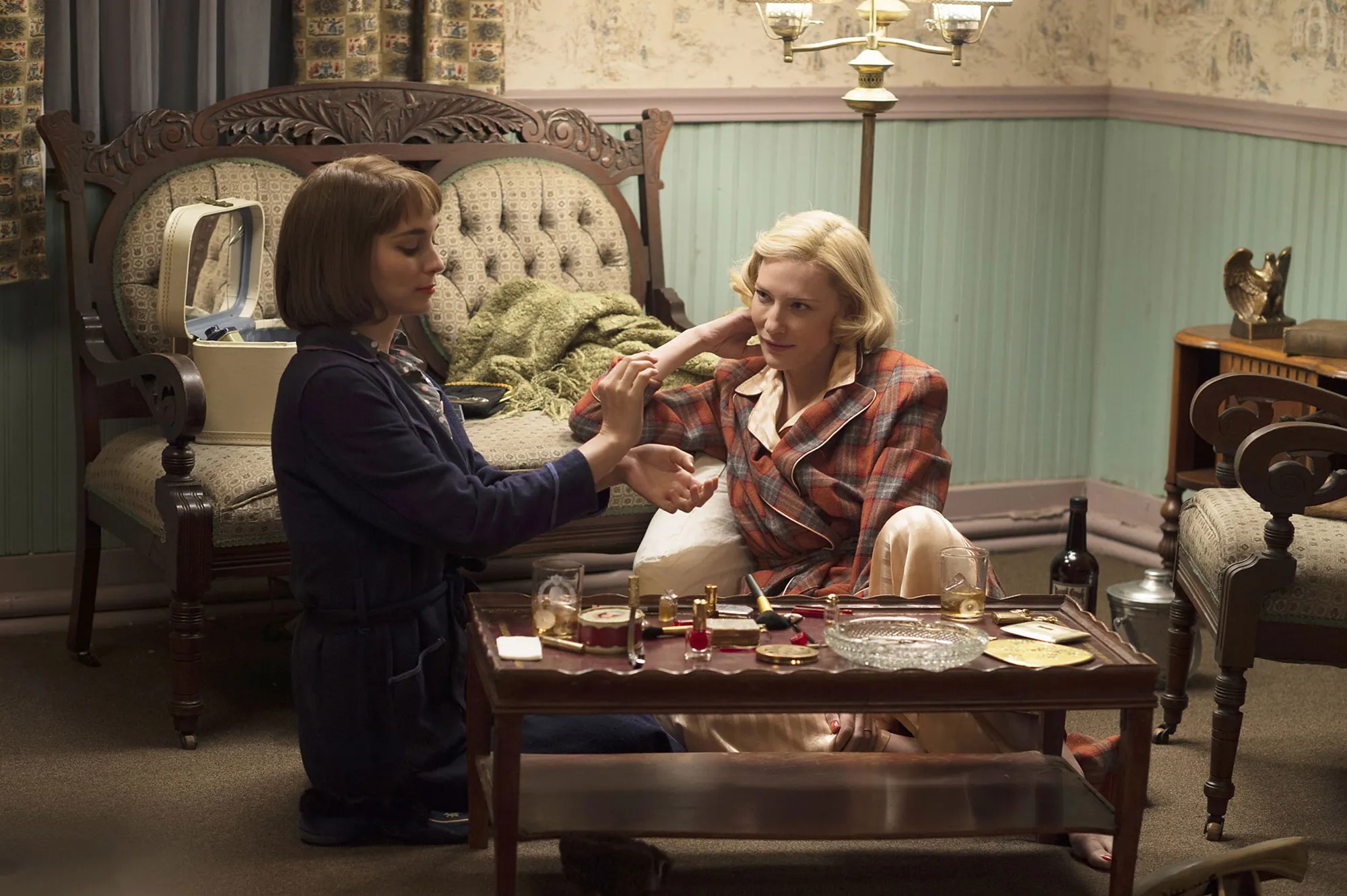𝐂𝐚𝐫𝐨𝐥 (𝟐𝟎𝟏𝟓)

Introduction “Carol” is a 2015 romantic drama film directed by Todd Haynes, based on the novel The Price of Salt by Patricia Highsmith, which was first published in 1952. The screenplay was written by Phyllis Nagy. The film features an impressive cast, including Cate Blanchett, Rooney Mara, Sarah Paulson, Jake Lacy, and Kyle Chandler. Set in the early 1950s, the film explores themes of love, identity, and societal constraints, all portrayed through the story of a forbidden relationship.
Plot Summary The film revolves around the love story between two women: Therese, a young aspiring set designer, and Carol, an older, married woman. Therese meets Carol while working in a department store, and the two women are immediately drawn to each other. As their relationship develops, they face numerous challenges, including societal pressures and Carol’s complicated family life. The film captures the emotional and psychological toll of their love affair as they navigate their feelings in a time when homosexuality was not openly accepted.
Themes of Love and Identity One of the central themes of Carol is the exploration of love in its many forms. The film portrays a romantic relationship that transcends societal norms and expectations. Therese’s journey of self-discovery is shown through her growing feelings for Carol, which leads her to question her own identity and desires. Carol, on the other hand, faces the consequences of her love for Therese in a society that condemns her for being a lesbian. The film delicately explores how love can be both a source of personal liberation and a source of intense personal conflict.

The Role of Society The social context of the 1950s plays a crucial role in the film’s narrative. During this time, homosexuality was considered a taboo, and people like Carol had to live their lives in secret. This societal repression is evident throughout the film, especially in Carol’s interactions with her husband, Harge, who is determined to keep their marriage intact, despite his knowledge of her sexual orientation. The film emphasizes the harsh realities faced by LGBTQ individuals in a world that does not accept them, making the relationship between Carol and Therese even more poignant and dangerous.

Character Development Both Cate Blanchett and Rooney Mara deliver outstanding performances in their respective roles as Carol and Therese. Blanchett portrays Carol with a mix of elegance, strength, and vulnerability, while Mara brings Therese to life as a young woman caught between her innocence and her growing understanding of her own desires. Their chemistry on screen is undeniable, making their relationship both believable and emotionally powerful. The supporting cast, including Sarah Paulson as Carol’s close friend, also adds depth to the story, providing a glimpse into the struggles and sacrifices of those who support the main characters.

Conclusion In conclusion, Carol is a beautifully crafted film that explores the complexities of love, identity, and societal expectations. Through its nuanced storytelling and exceptional performances, the film captures the emotional intensity of a forbidden romance in the 1950s. Todd Haynes’ direction, combined with Phyllis Nagy’s screenplay, creates a deeply moving narrative that resonates with audiences long after the credits roll. Carol not only showcases the struggles of its characters but also highlights the timeless power of love and self-discovery.











